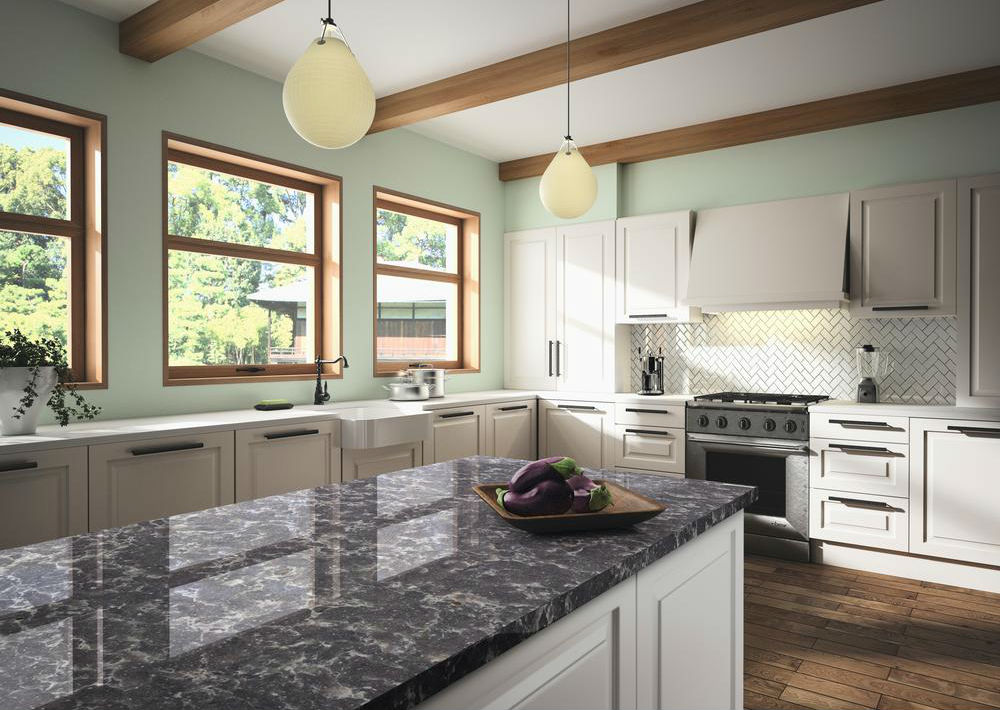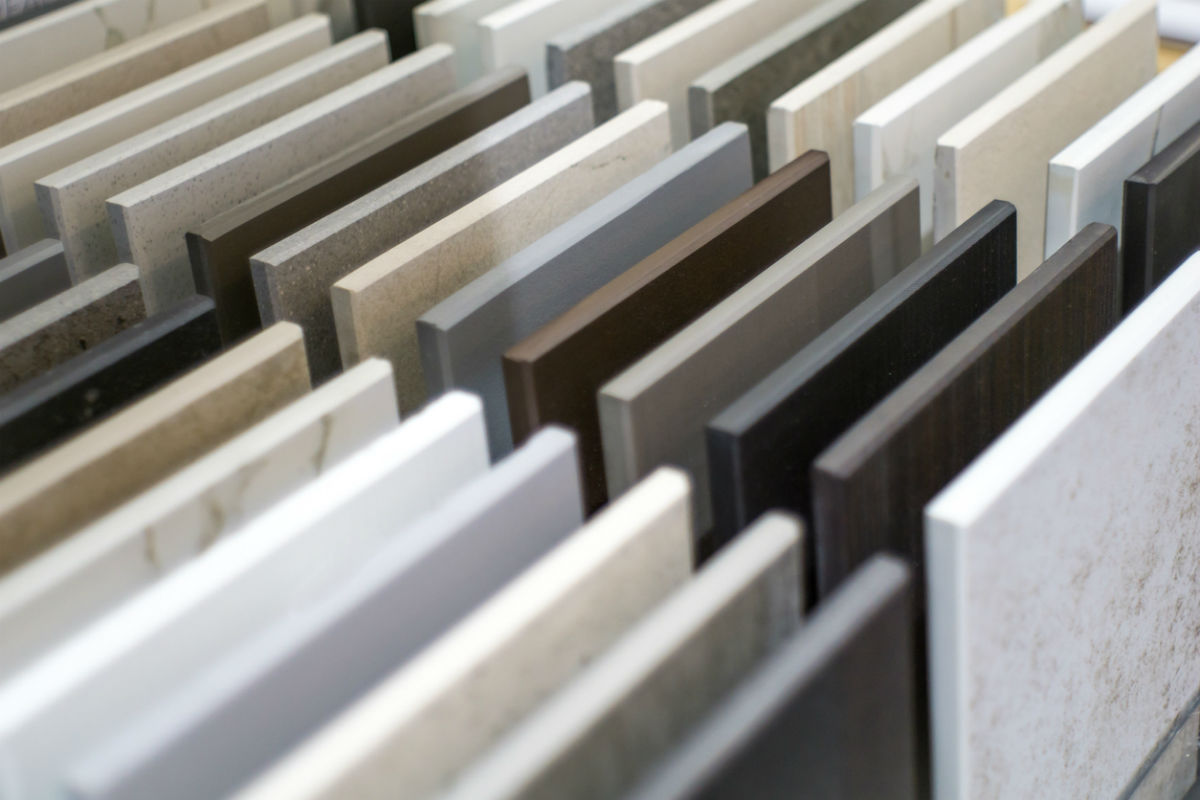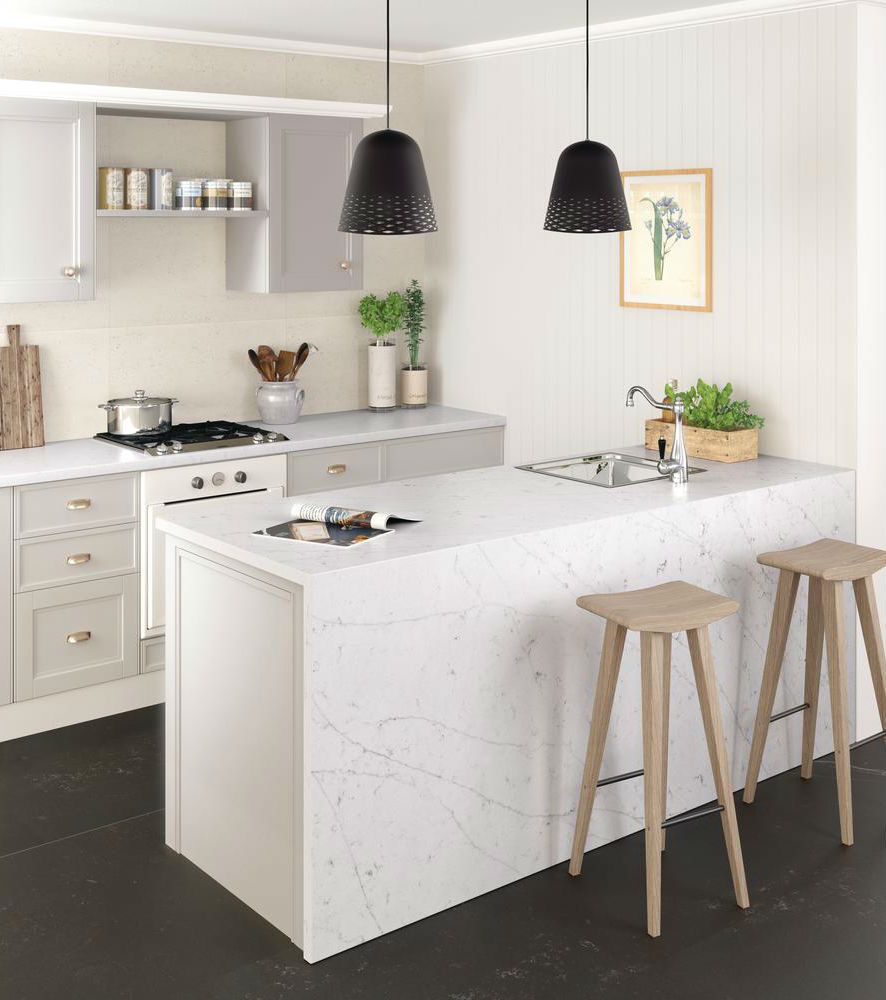We may earn revenue from the products available on this page and participate in affiliate programs. Learn More ›

Many Americans nowadays care about making eco-friendly choices. And when it comes to countertops, engineered stone is one of the most environmentally sensitive choices you can make. An alternative to natural stone cut from pure marble or granite, this factory-made composite features crushed stone (often quartz crystals in countertops and marble in wall and flooring products) bound in slab form with an adhesive or resin. In fact, because of the high percentage of quartz crystals found in quartz countertops, the material is often simply called quartz.
But this type of surface offers a host of other benefits, too—among them its durability, beauty, and easy maintenance. These qualities and more make engineered stone countertops prime materials for interior designers’ kitchen schemes and the clients who hire them. Ahead, NJ-based architect Joshua Zinder offers his insight on the versatile surface by answering some of prospective buyers’ biggest questions.
What kind of engineered stone can be used as a countertop?
Slabs used in the kitchen should be acid-resistant and non-absorptive, and a variety of products on the market made with crushed quartz crystals—including options from Silestone, Caesarstone, and IceStone—fit the bill. Most engineered stones are fantastic for high-wear uses such as kitchen countertops. The types and sizes of the components used to make the engineered stone that will determine its best uses. An engineered surface with large chunks of marble, for example, will be limited in performance to the pieces of marble it contains.
RELATED: What’s the Difference? Quartz vs. Quartzite
What makes engineered stone good as a countertop surface?
Unlike solid surfacing or plastic laminate, which are temperature-sensitive and can catch fire, engineered stone resists heat well. And unlike some other surfaces—even natural stones—engineered ones resist stains from liquids like wine or coffee.

What are its primary characteristics?
Strong, durable, and attractive, engineered stone is very consistent in look and pattern. The non-porous surface is easy to maintain and heat-resistant, too. Some products can be specified as bacteria-resistant and not others, but since all are non-absorptive and resistant to heat, they should not be collecting bacteria in the first place.
What are engineered stone’s biggest advantages?
Beyond brute strength and heat resistance, these man-made products come in a myriad of shades and styles. Some engineered stones are made to look like limestone or marble, enabling you to get the natural coloring and texture you want but with better performance. This also makes engineered stone counters a fine stand-in when you prefer to use recycled materials or protect natural resources like real marble. Plus, many contractors are familiar with the products and will install them properly.
RELATED: 12 Top Names in Engineered Stone
What are its cons?
It’s hard to create curves with engineered stone, but as far as typical countertop designs go, there’s nothing you can’t do with these products that you can accomplish with conventional stone. In fact, we’ve pushed the limits with edge and corner details and other shapes in engineered stone materials.

How much does it cost?
Generally about $60 to $100 per square foot installed.
Why is it so expensive?
With engineered stone, you pay for good performance and a long lifetime. Some colors and patterns are more expensive than others, but others can be quite affordable (I even put one of these in my own house).
Plus, while it’s expensive—definitely more so than plastic laminates—no more so than many natural stone slabs and solid surface materials. But consider this: For years we were specifying white marble with no veins, which looks great but is very expensive. Now to get that white look, we can use engineered stones, which look exactly the same as marble side by side but don’t cost as much. There are lots of suppliers, and the product delivers a consistent look.
What are its installation requirements?
Work with people who know the material, and look for those who are recommended or certified by the material manufacturers.